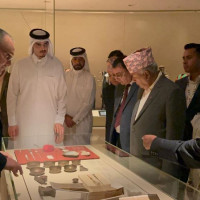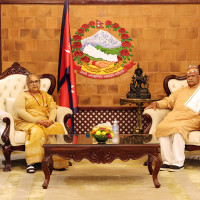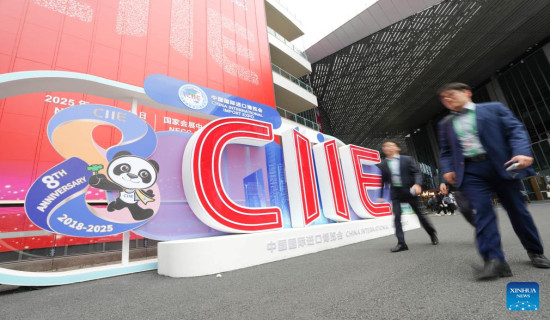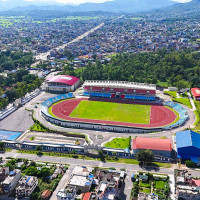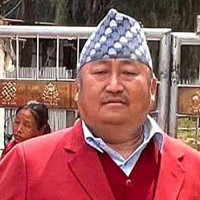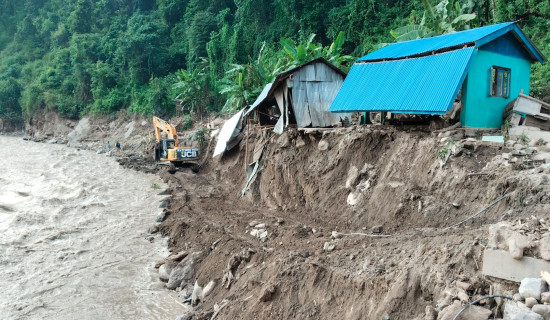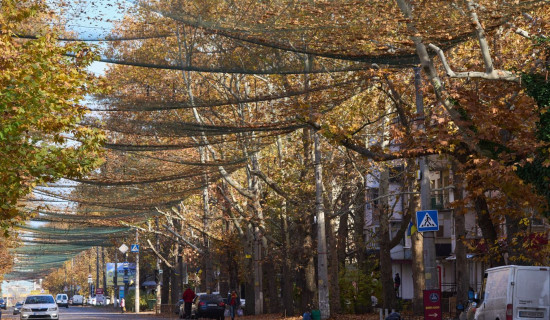- Thursday, 6 November 2025
Ratna Mandir is still not in list of Pokhara visitors
By Our Correspondent,Kaski, June 10: It has been two years since the Ratna Mandir that stands on the banks of Phewa Lake, Pokhara, was opened for the public. Ratna Mandir and the park were opened to the public on the occasion of the Republic Day by the then Minister of Culture, Tourism and Civil Aviation, Sudan Kirati.
Ratna Mandir, which was used as a Pokhara-based palace by the former kings, was finally made accessible to the public, aiming to enrich tourism by offering it as a new tourist destination. The decision came after persistent appeals from businessmen in the lakeside area, urging the government officials to take action.
However, after opening it for public, Ranta Mandir has not been able to attract visitors as per the expectations even when the number of domestic tourists has increased significantly in Pokhara.
According to the data of Nepal Trust, only a small number of people have visited Ratna Mandir. Two years after the building was opened, the number of visitors still remains quite low.
According to the chief of Nepal Trust Office, Pokhara, Minprasad Lamichhane, “After the inauguration, a total of 26,632 internal and external tourists have visited Ratna Mandir.
The visitors coming to visit Ratna Mandir are separated into five categories: Native citizens (except differently abled, students and elderly), visitors from China and India, visitors from SAARC countries except India, foreigners and students except from the SAARC countries and senior citizens. For entry to Ratna Mandir, tickets of Rs. 50, 100, 200,150 and 300 are available.”
Lamichhane stated that by the end of mid-May, a total of Rs. 2,446,600 was collected from the ticket sales. The tourists, both domestic and foreign, visit Pokhara in large numbers, but not all of them visit the Ratna Mandir. On average 22 to 23 individuals visit the temple daily.
Even though the number of tourists visiting Pokhara has increased, the number of tourists entering Ratna Mandir remains low, which could be due to insufficient promotion and publicity. Lamichhane highlighted that the presence of soldiers at the entrance might cause visitors to mistakenly perceive Ratna Mandir as an army barracks, making them hesitant to enter.
He emphasised the need for better promotion, as many people remain unaware of its significance as a tourist destination. Additionally, he noted that Ratna Mandir is absent from pamphlets listing places to visit, resulting in tourists overlooking it during their time in Pokhara. To address this, he suggested installing a digital board at Ratna Mandir to provide information about the palace’s interior.
Ratna Mandir, located in Lakeside, Pokhara-8, spreads over 174 ropanis of land, including a park. It was built in 1958 by King Mahendra in the name of his wife Ratna, and the members of the royal family used to stay there when they visited Pokhara. After 2010, it came under the ownership of Nepal Trust.
In the Ratna Mandir complex, there are 10 small and large buildings, including the historic Ratna Mandir Palace, a basement, and a children’s garden. Inside the palace, there are 11 rooms including a meeting room, the king’s and queen’s bedroom, a guest room used by royal relatives and a dining room.



-original-thumb.jpg)
